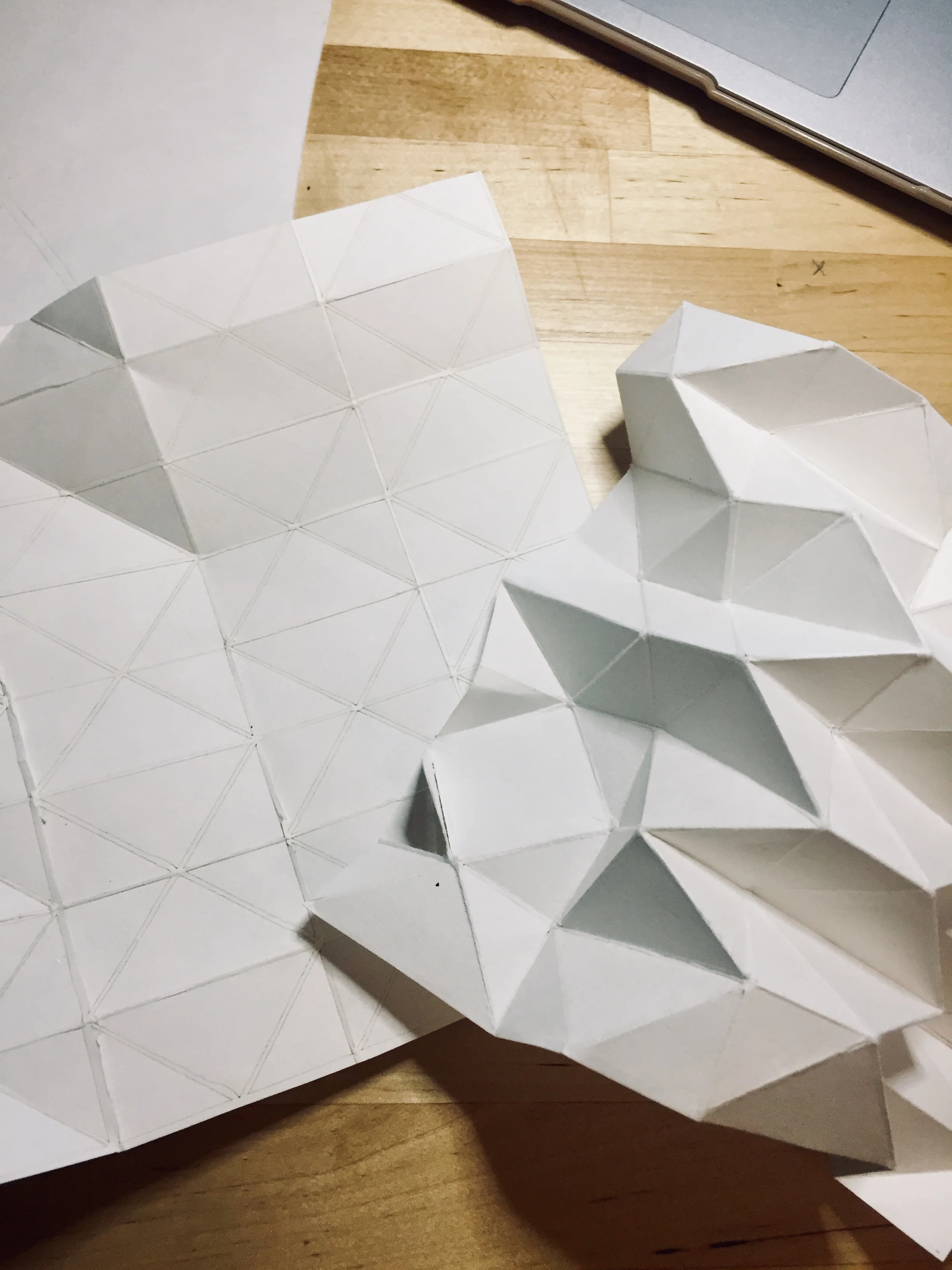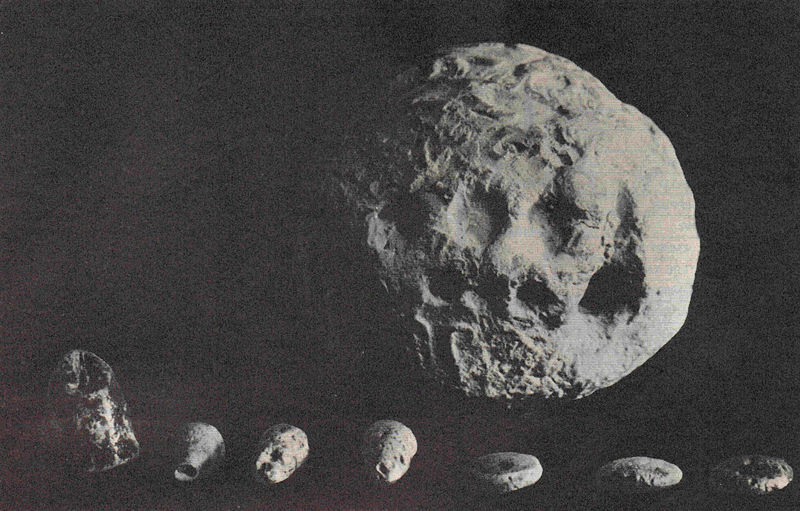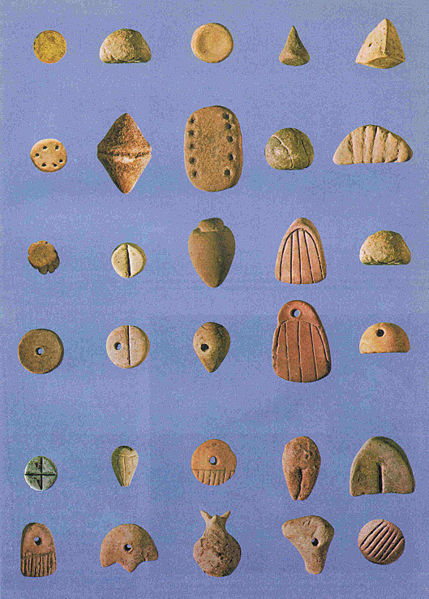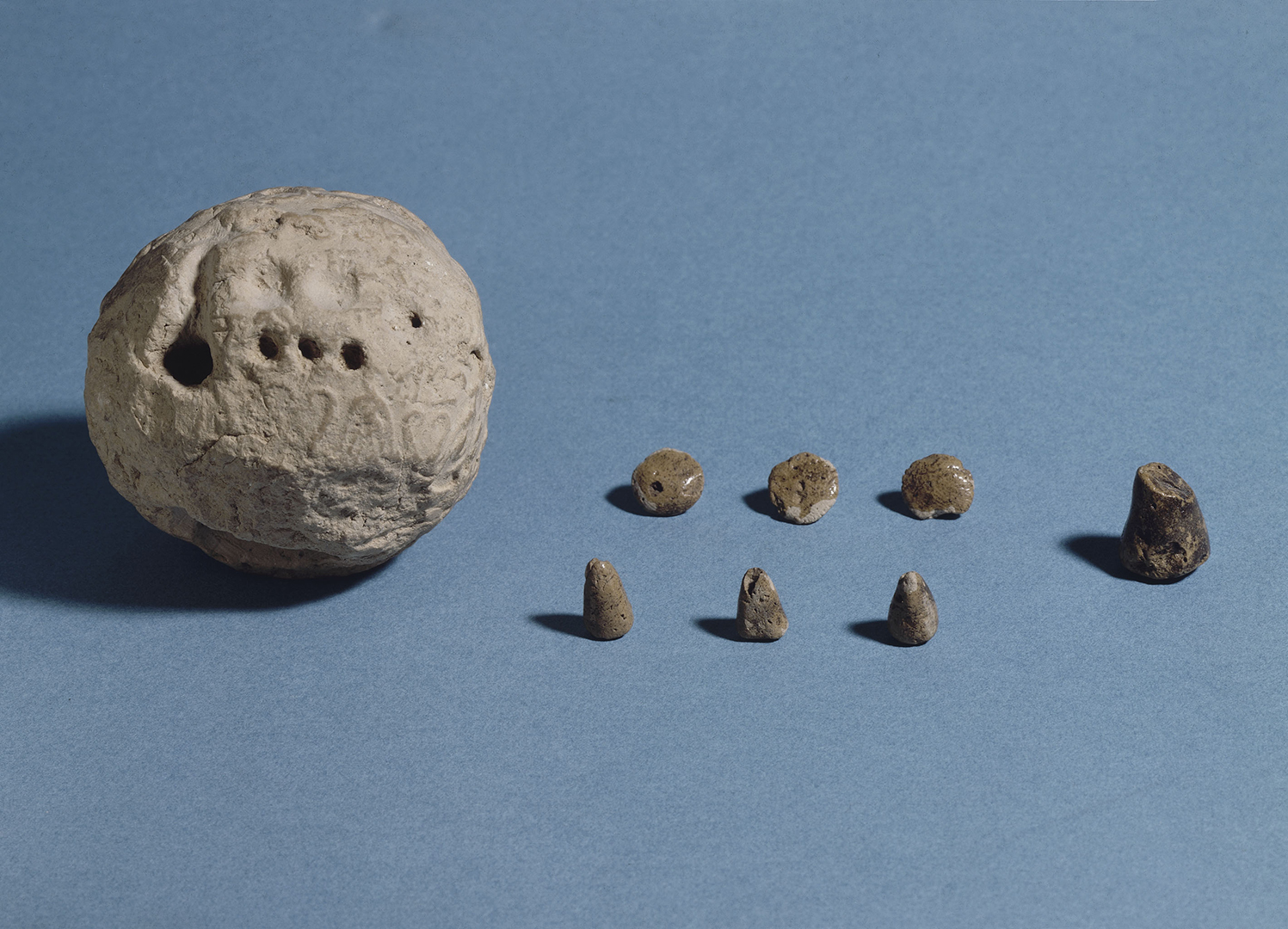Skin and Origami: Soft Displays for Biosensing Technologies by Gabrielle Benabdallah
This project is part of a series that explores how biosignals can be represented and interpreted semantically and poetically, as opposed to visually or sonically. Playing with the idea of the body as an inscription device, and especially of the skin as an “open book", Melyza is a display for a galvanic skin response (GSR) sensor that evokes the skin through an origami structure made out of silicon.
Paper prototype. Video of the silicon model available here.
The data recorded by the GSR sensor is interpreted by an algorithm that maps variations in skin conductance to various electrical signals sent to the origami display. The display is then actuated via muscle wires that force the structure to bend, fold, and open out again, revealing various words and parts of speech written in each of the structure's folds.
The pattern used in the initial explorations for its apparent kinematic qualities. The waterbomb is one of the most widely used origami patterns.
The inspiration for the "foldable" nature of the display comes from both a concern to find a form that mirrors the literary device used in this project (i.e. cut-up poetry and prose) and to inscribe this display into a long tradition of objects that connect body and meaning through writing.
These objects are some of the earliest forms of writing technology we know of ( app. 3300 BCE). Discovered in archeological sites in Iran, each bulle (French for "bubble") was used as a container for tokens that represented the nature and number of various trading items. The bulles symbolically represented the mouth in which language (the tokens) lies. Marks on the surface of the object, made out of clay, indicated its content without having to break it. Eventually, the bulles became flatter and flatter until they transformed into clay tablets.
(Partial documentation in French here.)
X-rays of one of the "bulles", with the tokens inside.
These are very initial steps in a larger project that adresses the field of biosensing technologies from a critical and artistic perspective. I am currently inquiring into origami models that use misaligned crease patterns to generate more dynamic structures. Materials such as silicon, elastic parts, and woven wire mesh will be explored.










